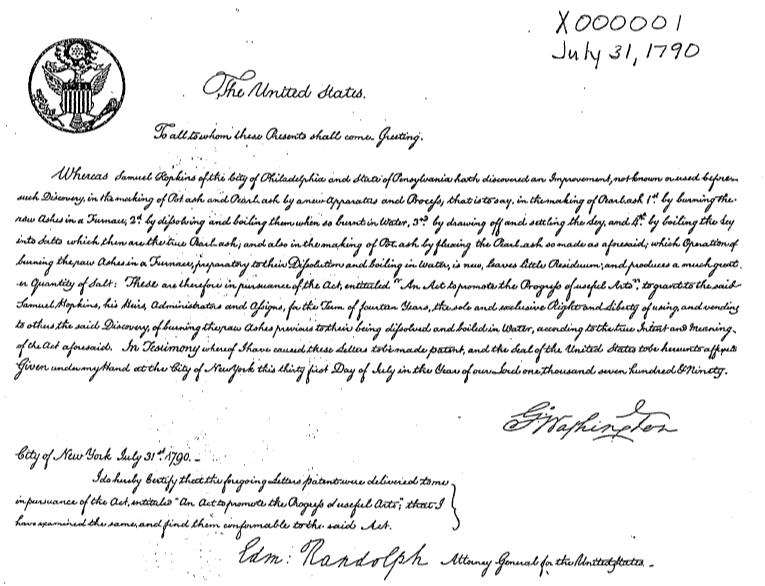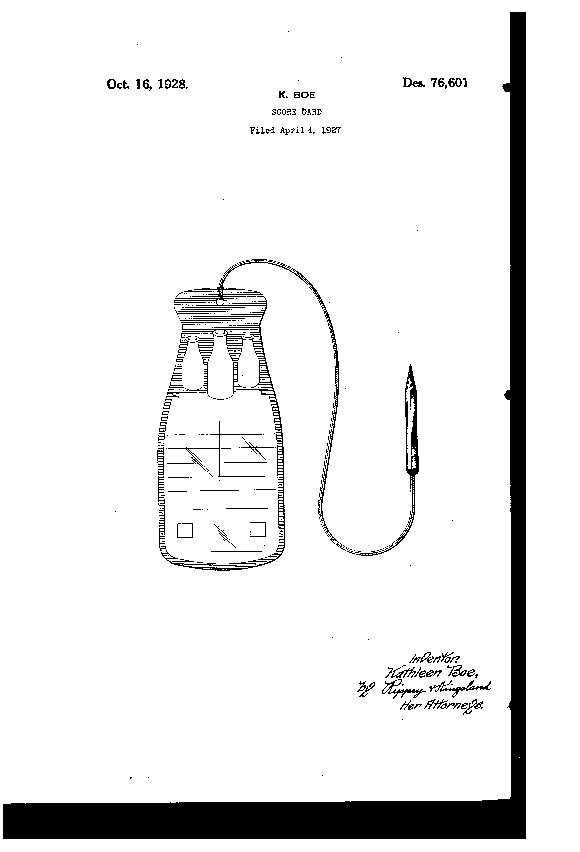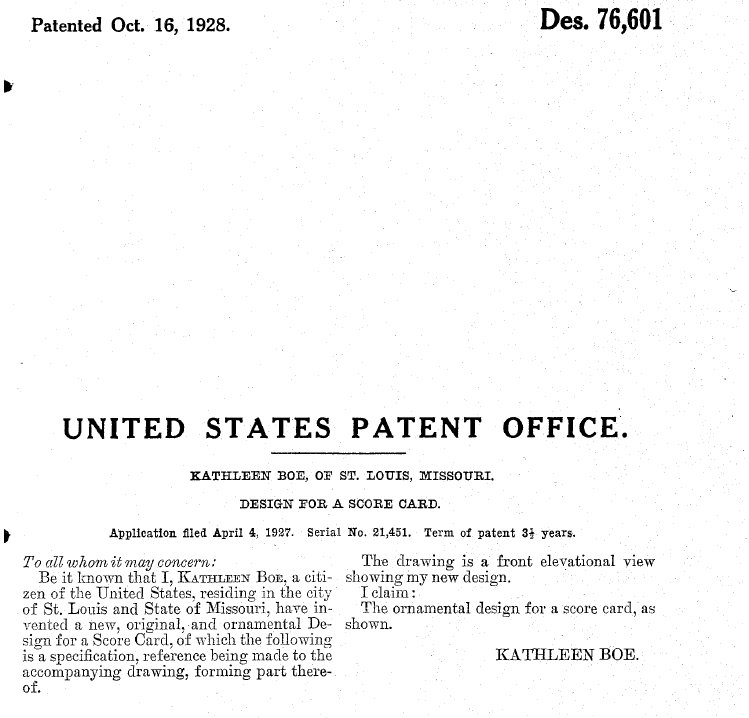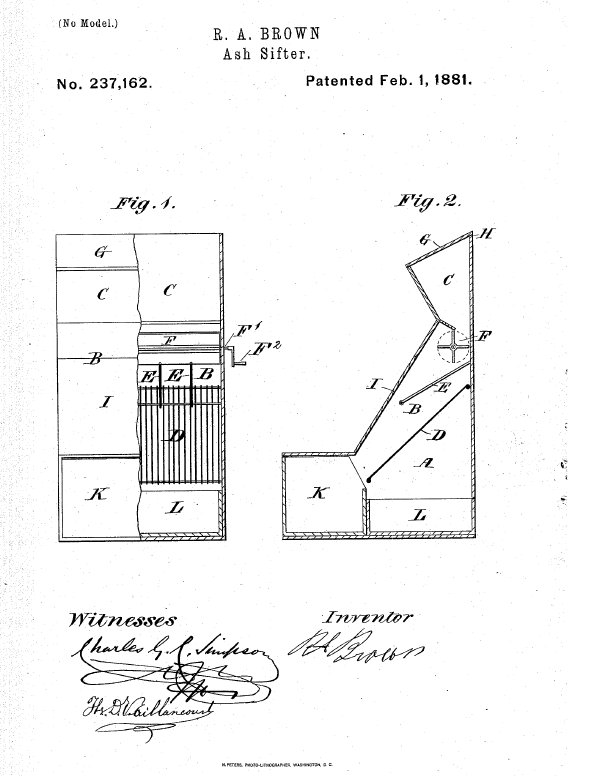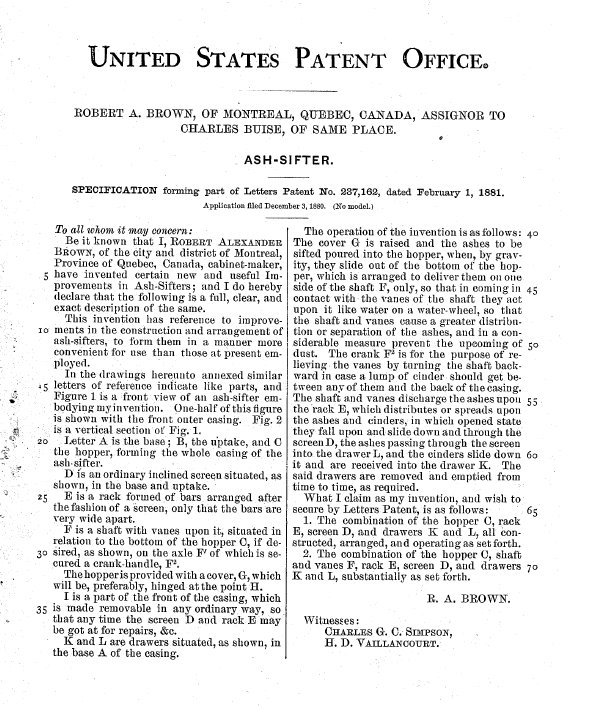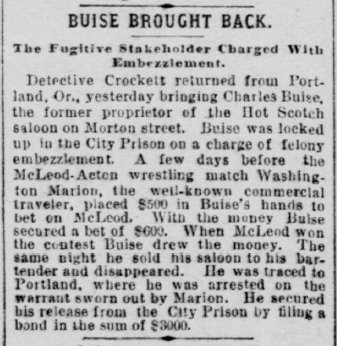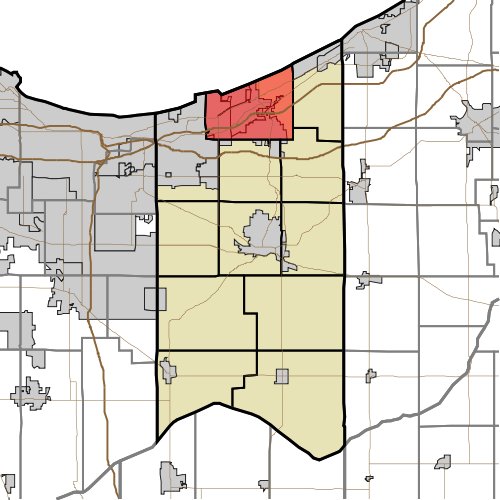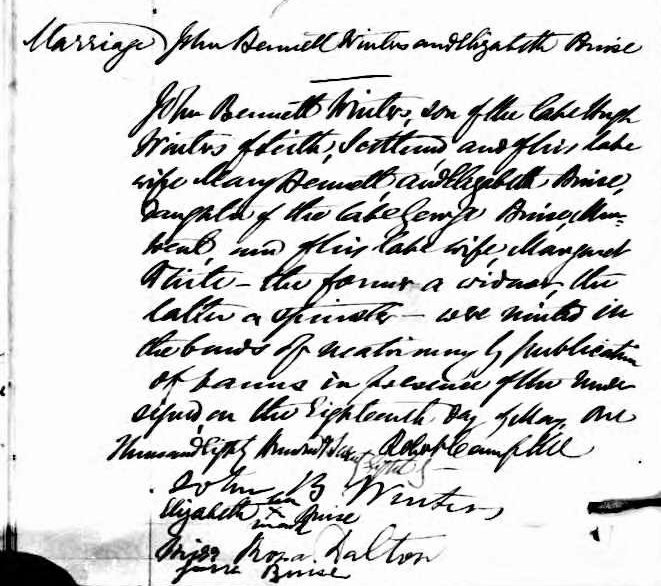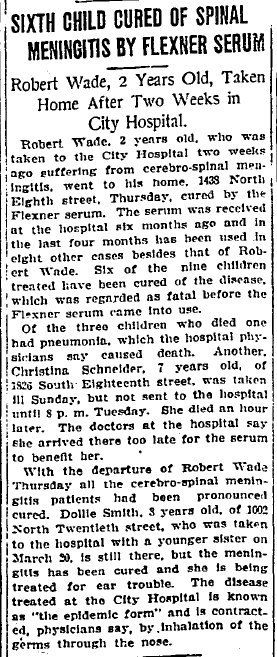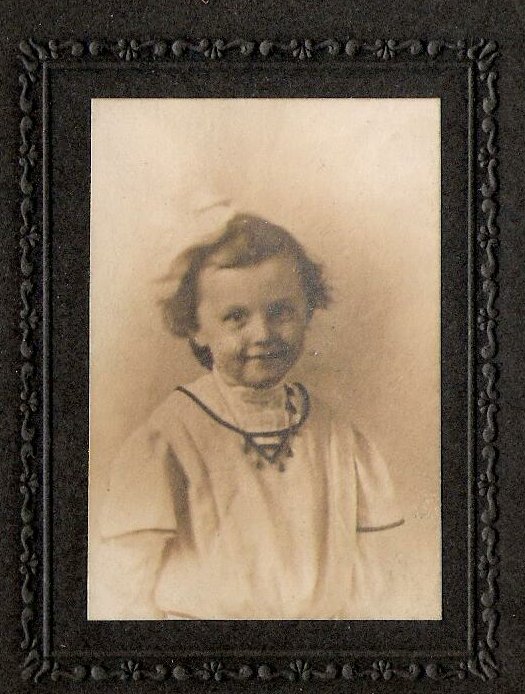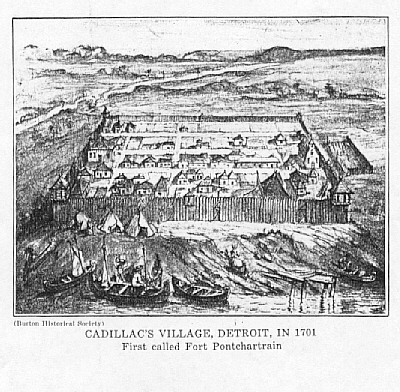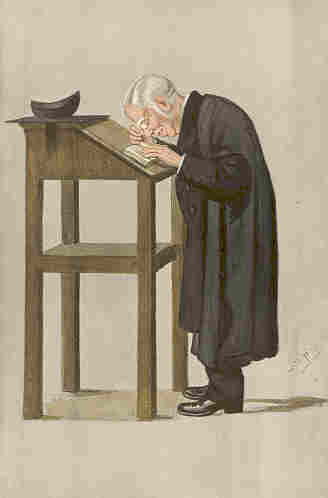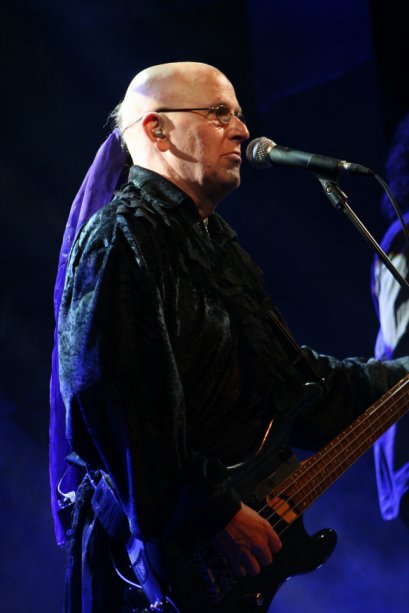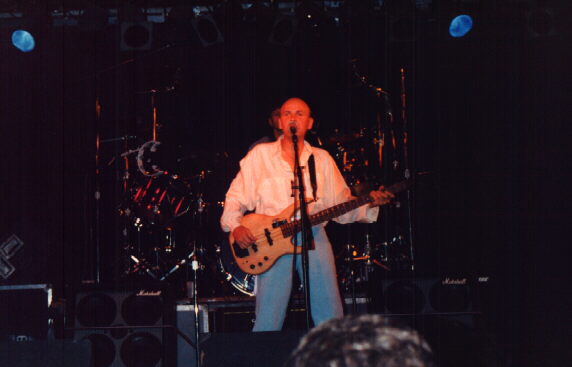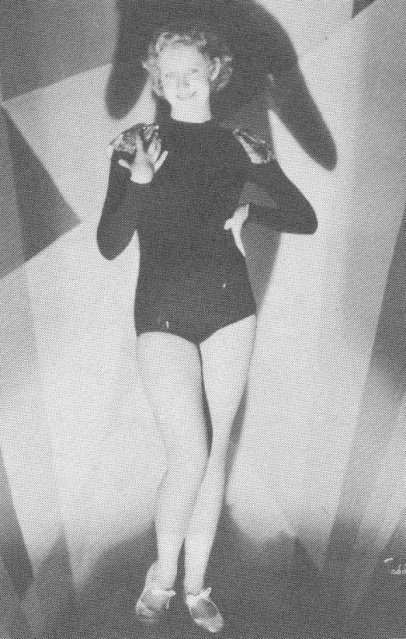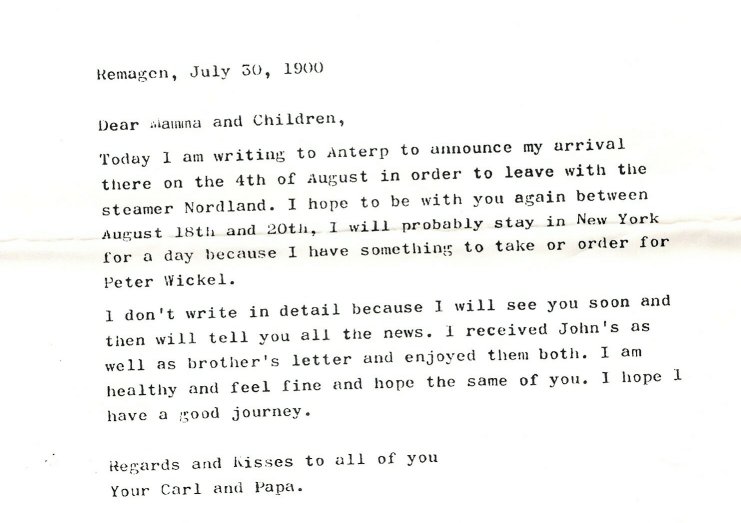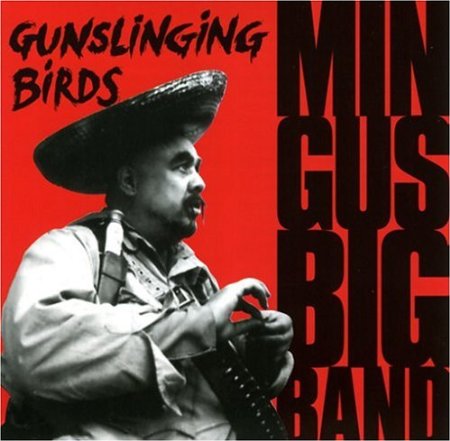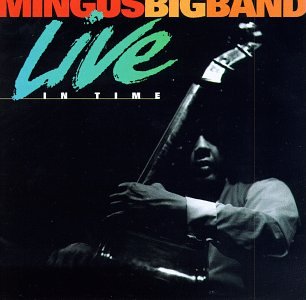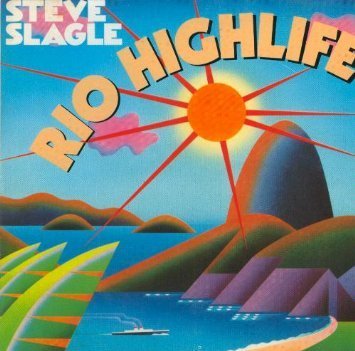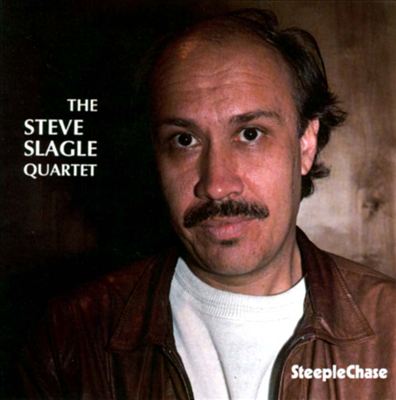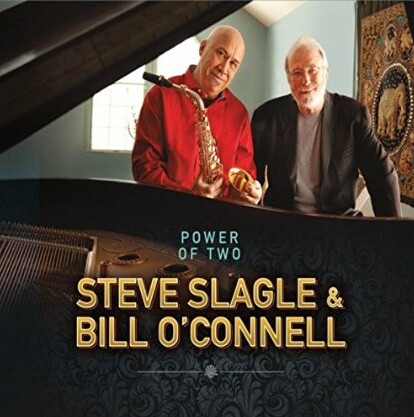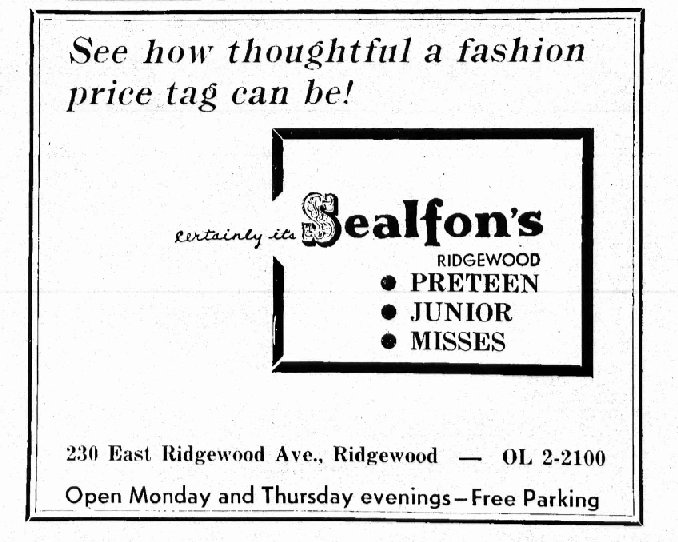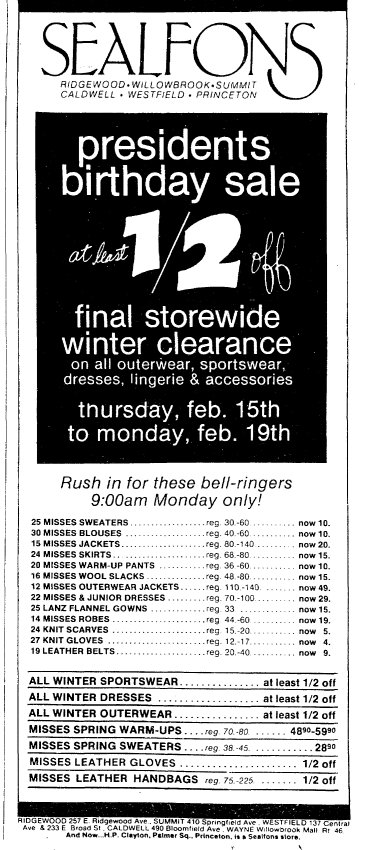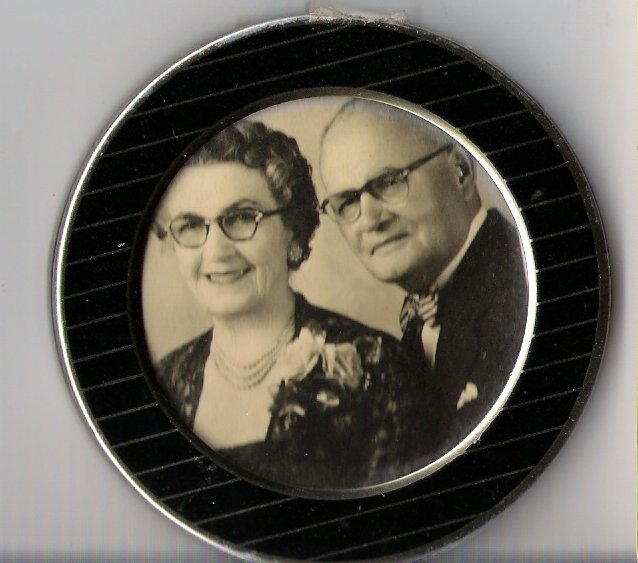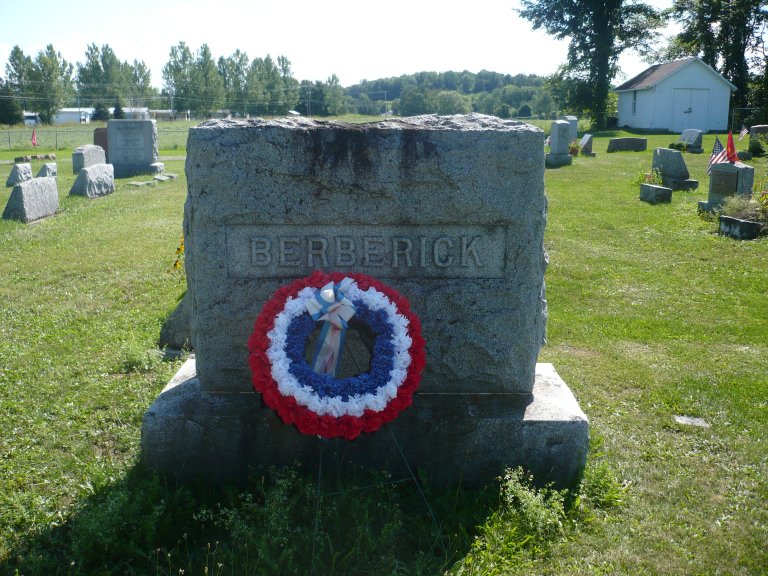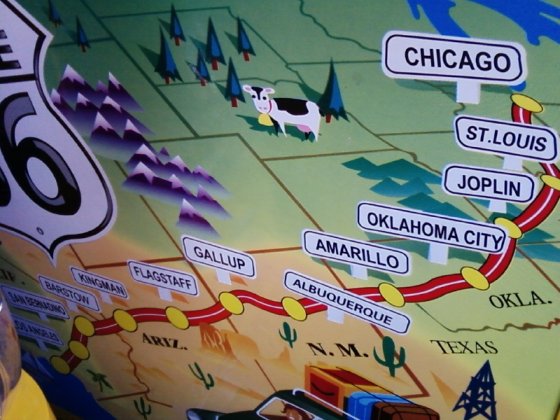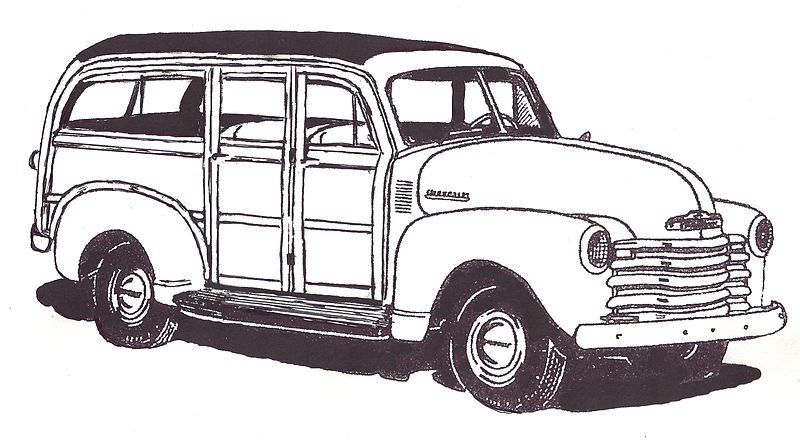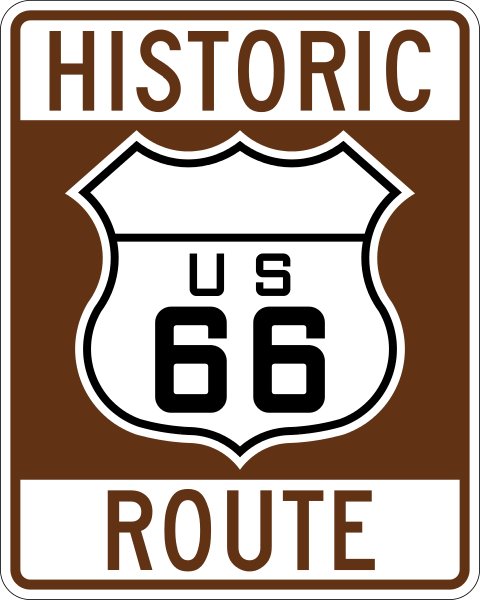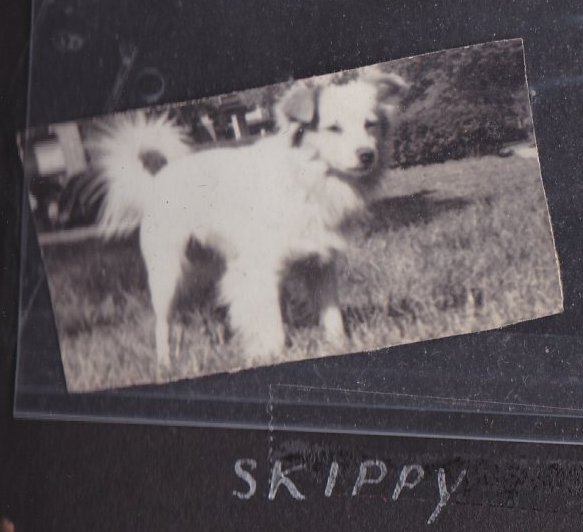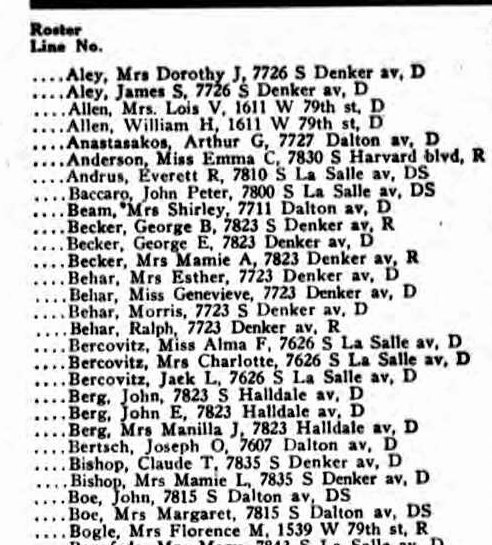On 10 April 1790, the Patent Act of 1790 was enacted. On 31 July 1790 (225 years ago today), the first patent was issued to Samuel Hopkins for "an Improvement, not known or used before such Discovery, in the making of Pot ash and Pearl ash by a new Apparatus and Process." Potash was used in making fertilizer.
Patent 000001, issued to Samuel Hopkins on 31 July 1790. Public domain. Available from Wikimedia Commons.
On 16 October 1928, my great-grandmother Kathleen (Graham) Boe was issued a patent for a design for a score card.
Boe, Kathleen. Design for a Score Card.Patent USD76601. Application filed 4 April 1927. Patented 16 October 1928. Available from http://www.google.com/patents/USD76601.
Boe, Kathleen. Design for a Score Card.Patent USD76601. Application filed 4 April 1927. Patented 16 October 1928. Available from http://www.google.com/patents/USD76601.
Charles Buise, who was associated with my family and may be a relative, was the assignor of a patent for an ash sifter which was invented by Robert Alexander Brown. The patent was issued on 1 February 1881.
Brown, Robert A., assignor to Charles Buise. Ash-Sifter. Patented 1 February 1881. Available from
https://www.google.com/patents/US237162.
Brown, Robert A., assignor to Charles Buise. Ash-Sifter. Patented 1 February 1881. Available from
https://www.google.com/patents/US237162.
References
First U.S. Patent Issued Today in 1790
Patent Act of 1790
Samuel Hopkins (inventor)
Covering genealogy, family history, historical events and places, and anything else related!
Friday, July 31, 2015
Thursday, July 30, 2015
Thriller Thursday: Charles Buise Embezzles Stake Money and Flees
Shortly before the 1892 wrestling match between D. S. McLeod and Joe Acton, Charles Buise deposited $250 with the Chronicle to secure a bet on McLeod, $1000 against $1100. Washington Marion, a traveling salesman, gave Charles Buise $500 to bet on McLeod, and Buise secured a bet of $600 for him.
Charles Buise was the proprietor of the Hot Scotch saloon on Morton Street in San Francisco. After he collected his winnings, he did not give Washington Marion his share of the money. He sold his saloon to his bartender, and headed to Portland, Oregon, where his wife was working as a song and dance performer. He was captured there several months later and was brought back to San Francisco. He was charged with embezzlement and placed in the San Francisco City Prison, but was released on $3000 bond.
After getting out on bail, Charles Buise left the United States and returned to his home country, Canada. He went to Victoria, British Columbia. The winning wrestler, McLeod, was also from British Columbia; he came from Nanaimo. I wonder if this was coincidental, or if there was some connection. Charles Buise had been born and baptized in Quebec City, and had lived in Montreal before he came to San Francisco (and had allegedly passed a counterfeit bill there in 1887). Although an attempt was made to capture him in British Columbia, he escaped and went to Montreal. When he found out that his wife was cheating on him with actor Waldo Whipple, he tracked them down in Butte, Montana, where he shot them and then shot himself.
San Francisco Chronicle, 22 January 1892
Prior to the match, there was suspicion that the contest would not be a fair one. McLeod won the match.
The Morning Call (San Francisco, CA), 11 March 1892
Charles Buise was the proprietor of the Hot Scotch saloon on Morton Street in San Francisco. After he collected his winnings, he did not give Washington Marion his share of the money. He sold his saloon to his bartender, and headed to Portland, Oregon, where his wife was working as a song and dance performer. He was captured there several months later and was brought back to San Francisco. He was charged with embezzlement and placed in the San Francisco City Prison, but was released on $3000 bond.
The Morning Call (San Francisco, CA), 1 July 1892
After getting out on bail, Charles Buise left the United States and returned to his home country, Canada. He went to Victoria, British Columbia. The winning wrestler, McLeod, was also from British Columbia; he came from Nanaimo. I wonder if this was coincidental, or if there was some connection. Charles Buise had been born and baptized in Quebec City, and had lived in Montreal before he came to San Francisco (and had allegedly passed a counterfeit bill there in 1887). Although an attempt was made to capture him in British Columbia, he escaped and went to Montreal. When he found out that his wife was cheating on him with actor Waldo Whipple, he tracked them down in Butte, Montana, where he shot them and then shot himself.
San Francisco Chronicle, 27 January 1893
Although the above article states that Waldo Whipple also died, he actually survived his injuries.
Charles Buise was probably related to Elizabeth Buise, who married my 3rd-great-grandfather John Bennet Winters. But since his mother Margaret McGillivray's death notice was transcribed in the Winters family Bible and she was not Elizabeth Buise's mother, I wonder if he is also related to me. I have many black sheep in my family. Considering all of Charles Buise's misdeeds, I figure he must be my cousin!
Wednesday, July 29, 2015
International Tiger Day
July 29 is International Tiger Day. The purpose of this day is to raise awareness for tiger conservation. Only about 3000 tigers are left in the wild.
In 1858, my ancestors may have had the opportunity to see a tiger. Animal trainer A. Lovell exhibited an Australian bear and a Bengal tiger in Nashville, Tennessee.
Clearly, back in 1858 people were not thinking about the welfare and protection of these animals. Thankfully, awareness has increased.
In 1858, my ancestors may have had the opportunity to see a tiger. Animal trainer A. Lovell exhibited an Australian bear and a Bengal tiger in Nashville, Tennessee.
Nashville Union and American, 18 February 1858, page 3. Available from Chronicling America.
Clearly, back in 1858 people were not thinking about the welfare and protection of these animals. Thankfully, awareness has increased.
Tuesday, July 28, 2015
Fiestas Patrias
José de San Martín proclaims the independence of Peru in 1821. Painting by Juan Lepiani, 1904. Photographic reproduction by Discjockey. Public domain. Available from Wikimedia Commons.
The Fiestas Patrias are the national holidays celebrating Peru's independence from the Spanish Empire. July 28 commemorates Peru's independence (which was proclaimed by José de San Martín on 28 July 1821), and July 29 honors Peru's armed forces and national police. These holidays are very important in Peru, and many people take long weekends to celebrate.
On July 28, the day begins with a 21-cannon salute. There is a flag-raising ceremony, and the president of Peru gives an address about the state of the nation. A military parade is held on July 29. The Peruvian flag is displayed throughout the month of July.
I do not have Peruvian ancestors, but my sister-in-law is from Peru.
References
Fiestas Patrias (Peru)
Peruvian Independence Day
10 Ways to Celebrate the Fiestas Patrias of Peru in Lima
The Fiestas Patrias are the national holidays celebrating Peru's independence from the Spanish Empire. July 28 commemorates Peru's independence (which was proclaimed by José de San Martín on 28 July 1821), and July 29 honors Peru's armed forces and national police. These holidays are very important in Peru, and many people take long weekends to celebrate.
On July 28, the day begins with a 21-cannon salute. There is a flag-raising ceremony, and the president of Peru gives an address about the state of the nation. A military parade is held on July 29. The Peruvian flag is displayed throughout the month of July.
I do not have Peruvian ancestors, but my sister-in-law is from Peru.
References
Fiestas Patrias (Peru)
Peruvian Independence Day
10 Ways to Celebrate the Fiestas Patrias of Peru in Lima
Monday, July 27, 2015
Mappy Monday: Map of Porter County, Indiana, Highlighting Westchester Township
Map of Porter County, Indiana, highlighting the location of Westchester Township. By Omnedon, 25 November 2007. Public domain. Available from Wikimedia Commons.
This map shows the location of Westchester Township in Porter County, Indiana. My Borg ancestors lived in Westchester Township.
This map shows the location of Westchester Township in Porter County, Indiana. My Borg ancestors lived in Westchester Township.
Sunday, July 26, 2015
52 Ancestors: Week 30 "Challenging": Elizabeth Buise
I do not know much about Elizabeth Buise, the last (second as far as I know) wife of my 3rd-great-grandfather John Bennet Winters. John and Elizabeth were married by Robert Campbell on 18 May 1878 at Presbyterian Saint Gabriel in Montreal, Quebec, Canada. The church record stated that Elizabeth's parents were George Buise of Montreal and his wife Margaret White, and that they were deceased.
Marriage of John Bennett Winters and Elizabeth Buise, 18 May 1878. Presbyterian Saint Gabriel, Montreal, Quebec, Canada. Ancestry.com. Quebec, Vital and Church Records (Drouin Collection), 1621-1967 [database on-line]. Provo, UT, USA: Ancestry.com Operations Inc, 2008. Original data: Gabriel Drouin, comp. Drouin Collection. Montreal, Quebec, Canada: Institut Généalogique Drouin.
John died on 25 December 1879. Apparently he and Elizabeth had a child, because "Infant of the late John Winters" is listed on Find A Grave as being buried in Mount Royal Cemetery (the same cemetery as John). The date of death (or burial) was 31 July 1880. I have not yet found any more information about this infant.
I have never found Elizabeth Buise in census records, and I do not know what happened to her. I do not know when she was born, but she must have been of childbearing age when she married John Bennett Winters.
Elizabeth was probably related to Charles Buise (son of Margaret McGillivray, the "mystery woman" in the Winters family Bible) and his father, Charles Buise/Bews. Jane Buise, who was a witness at the wedding of John Bennet Winters and Elizabeth Buise, was probably also a relative. She may be the Jane Buise who was enumerated as a servant in the household of Wales and Minnie Lee in Montreal in the 1881 Census of Canada, and who married William Edgar Jesse Smith on 23 August 1881. (Charles Buise was a witness at the wedding.) Charles Buise (son of Margaret) married Virginie Chebout on 23 February 1874 in Montreal; in the 1881 Census of Canada, she was also enumerated as Jane Buise.
The only George Buise or Bews that I have found is the George Bews who was enumerated in the 1825 Census of Lower Canada in Cap Sante, Hampshire. If he was Elizabeth's father, Margaret White may have been a second wife.
George Bews, Cap Sante, Hampshire, Quebec, Canada. Canada, recensement du Bas-Canada, 1825, database with images, FamilySearch (https://familysearch.org/ark:/61903/1:1:KHJD-6M4), citing p. 1685 1686, volume 3, MG 31 C1; Library and Archives Canada microfilm number C-718, Public Archives, Ottawa, Ontario; FHL microfilm 2,443,958.
On TheShipsList, I found a transcribed passenger list from a ship that sailed from Quebec City at 8:00 PM on 30 May 1834 and arrived in Montreal at 4:00 PM on 31 May 1834. Passengers 371 and 372 were named Buise and White. Perhaps they were Elizabeth's parents George Buise and Margaret White. Since they were not listed on the same line, perhaps they had not yet married; maybe they left for Montreal together and married there.
Screen shot, 1834 Arrivals: Canada - 8th trip up, Quebec to Montreal, May 30th 1834, left at 8 PM and arrived at 4 PM, May 31st. TheShipsList. http://www.theshipslist.com/ships/passengerlists/1834/cmay30.shtml
I would like to learn more about Elizabeth Buise for two reasons. One reason is that she was married to my 3rd-great-grandfather. The other reason is that I would like to figure out the connection between her and Charles Buise, son of Margaret McGillivray. Because Margaret's death notice was transcribed in the Winters family Bible, I think that she may be a relative, and perhaps that connection is what brought John Bennet Winters, his daughter Catherine Elizabeth Winters, and his son-in-law James Graham to Montreal. I do not know much about the family of Anna "Ann" Walker, my 3rd-great-grandmother and the previous wife of John Bennet Winters, and I know even less about my 2nd-great-grandfather James Graham. James Graham is my biggest brick wall, and would also have been an appropriate choice for this week's 52 Ancestors theme, but I have already written about him and have not learned anything more about him since I wrote that post. Margaret McGillivray may have been related to Ann Walker or James Graham.
Marriage of John Bennett Winters and Elizabeth Buise, 18 May 1878. Presbyterian Saint Gabriel, Montreal, Quebec, Canada. Ancestry.com. Quebec, Vital and Church Records (Drouin Collection), 1621-1967 [database on-line]. Provo, UT, USA: Ancestry.com Operations Inc, 2008. Original data: Gabriel Drouin, comp. Drouin Collection. Montreal, Quebec, Canada: Institut Généalogique Drouin.
John died on 25 December 1879. Apparently he and Elizabeth had a child, because "Infant of the late John Winters" is listed on Find A Grave as being buried in Mount Royal Cemetery (the same cemetery as John). The date of death (or burial) was 31 July 1880. I have not yet found any more information about this infant.
I have never found Elizabeth Buise in census records, and I do not know what happened to her. I do not know when she was born, but she must have been of childbearing age when she married John Bennett Winters.
Elizabeth was probably related to Charles Buise (son of Margaret McGillivray, the "mystery woman" in the Winters family Bible) and his father, Charles Buise/Bews. Jane Buise, who was a witness at the wedding of John Bennet Winters and Elizabeth Buise, was probably also a relative. She may be the Jane Buise who was enumerated as a servant in the household of Wales and Minnie Lee in Montreal in the 1881 Census of Canada, and who married William Edgar Jesse Smith on 23 August 1881. (Charles Buise was a witness at the wedding.) Charles Buise (son of Margaret) married Virginie Chebout on 23 February 1874 in Montreal; in the 1881 Census of Canada, she was also enumerated as Jane Buise.
The only George Buise or Bews that I have found is the George Bews who was enumerated in the 1825 Census of Lower Canada in Cap Sante, Hampshire. If he was Elizabeth's father, Margaret White may have been a second wife.
George Bews, Cap Sante, Hampshire, Quebec, Canada. Canada, recensement du Bas-Canada, 1825, database with images, FamilySearch (https://familysearch.org/ark:/61903/1:1:KHJD-6M4), citing p. 1685 1686, volume 3, MG 31 C1; Library and Archives Canada microfilm number C-718, Public Archives, Ottawa, Ontario; FHL microfilm 2,443,958.
On TheShipsList, I found a transcribed passenger list from a ship that sailed from Quebec City at 8:00 PM on 30 May 1834 and arrived in Montreal at 4:00 PM on 31 May 1834. Passengers 371 and 372 were named Buise and White. Perhaps they were Elizabeth's parents George Buise and Margaret White. Since they were not listed on the same line, perhaps they had not yet married; maybe they left for Montreal together and married there.
Screen shot, 1834 Arrivals: Canada - 8th trip up, Quebec to Montreal, May 30th 1834, left at 8 PM and arrived at 4 PM, May 31st. TheShipsList. http://www.theshipslist.com/ships/passengerlists/1834/cmay30.shtml
I would like to learn more about Elizabeth Buise for two reasons. One reason is that she was married to my 3rd-great-grandfather. The other reason is that I would like to figure out the connection between her and Charles Buise, son of Margaret McGillivray. Because Margaret's death notice was transcribed in the Winters family Bible, I think that she may be a relative, and perhaps that connection is what brought John Bennet Winters, his daughter Catherine Elizabeth Winters, and his son-in-law James Graham to Montreal. I do not know much about the family of Anna "Ann" Walker, my 3rd-great-grandmother and the previous wife of John Bennet Winters, and I know even less about my 2nd-great-grandfather James Graham. James Graham is my biggest brick wall, and would also have been an appropriate choice for this week's 52 Ancestors theme, but I have already written about him and have not learned anything more about him since I wrote that post. Margaret McGillivray may have been related to Ann Walker or James Graham.
Labels:
52 Ancestors,
Bews,
Buise,
Canada,
Montreal,
Quebec,
Quebec City,
Winters
Saturday, July 25, 2015
Sympathy Saturday: Christina Schneider's Death from Spinal Meningitis
St. Louis Post-Dispatch, 29 April 1909, page 6
Long before I became interested in genealogy, I knew that my maternal grandmother's oldest sister, Christina Schneider, had died of spinal meningitis as a child. I have not found a death record for her, but the above newspaper article confirms her cause of death.
It was heartbreaking for me to read this article. Six months earlier, St. Louis City Hospital had received Flexner serum, which was used to cure spinal meningitis. Since then, six of the nine children treated for spinal meningitis at the hospital had been cured. Sadly, Christina was not one of them. She died an hour after being brought to the hospital. The doctors said that she arrived too late to be helped by the serum.
My great-grandparents probably read this article too. My aunt Joan, their first grandchild, said that they never really got over Christina's death. Grieving parents reading this article would probably feel guilty and blame themselves for not taking her to the hospital sooner. The media probably did not consider the effect that their words might have on Christina's parents.
Christina Maria Schneider, 20 April 1903 - 27 April 1909
Friday, July 24, 2015
Founding of Detroit
On 24 July 1701, the city of Detroit was founded. Antoine Laumet de la Mothe, sieur de Cadillac, was given $1500 livre (about $300) by Louis XIV of France to help establish a fort and trading post on the Detroit River. The French wanted to keep the British from moving west of New England, to control the traffic on the Detroit River, and to monopolize the fur trade.
Cadillac left from Montreal with a party of 100 Frenchmen, including Captain Alphonse de Tonty, First Sergeant Jacob de Marsac, Robert Chevalier de Beauchêne, Father Nicholas Bernardin Constantin Delhalle (a Recollet priest), and Father François Vaillant de Gueslis (a Jesuit priest). About 100 Indians also traveled with them. They traveled up the Ottawa River on canoes to Lake Nipissing, down the French River and the Pickerel River to the Georgian Bay, south to Lake Huron, down the St. Clair River and through Lake St. Clair, until they reached the Detroit River. They set up camp at Grosse Ile on 23 July 1701. The next day, they traveled north and began building a settlement on the narrowest part of the river, overlooking the strait between Lake Erie and Lake St Clair. The settlement was named Fort Pontchartrain du Détroit, after Louis Phélypeaux, comte de Pontchartrain or his son Jérôme Phélypeaux, comte de Pontchartrain. Détroit is the French word for "strait."
Ste. Anne de Détroit Catholic Church was the first building to be completed in the settlement. The second building to be completed was the stockade.
References
Antoine de la Mothe Cadillac
Early Detroit: 1701-1760
Fort Detroit
The Founding of Detroit
French Detroit 1701-1760
People of Detroit: Antoine de la Mothe, Sieur de Cadillac
Ste. Anne de Detroit Catholic Church
Thursday, July 23, 2015
Those Places Thursday: Fontbonne University
My maternal grandmother Margaret Ann (Schneider) Boe attended Fontbonne College for one year. (Although her obituary says that she graduated, it is incorrect. I was at the funeral home with my mother and aunts when we provided the information for the obituary, and we did not know that a mistake had been made until we saw it in print.)
Fontbonne College, now Fontbonne University, is a Roman Catholic institution located in Clayton (suburban St. Louis), Missouri. It was founded in 1923 by the Sisters of St. Joseph of Carondelet, and named after Mother St. John Fontbonne, who re-established the Sisters of St. Joseph in 1807. In 1927, eight women received baccalaureate degrees and became the first graduates of Fontbonne College. Although Fontbonne was originally a women's college, it became co-educational in 1974. On 14 March 2002, Fontbonne College became Fontbonne University.
References
Fontbonne University (Wikipedia)
Fontbonne University: History
Fontbonne University: Undergraduate and Graduate Catalog 2014-2016
Sisters of St. Joseph
Wednesday, July 22, 2015
Spooner's Day
July 22 is Spooner's Day. The day honors Reverend William Archibald Spooner (22 July 1844 - 29 August 1930). He was known for his plays on words, in which corresponding consonants, vowels, or morphemes were switched.
Some examples of spoonerisms:
"The Lord is a shoving leopard" ("The Lord is a loving shepherd")
"A half-warmed fish" ("A half-formed wish")
"Such Bulgarians should be vanished" ("Such vulgarians should be banished")
"A blushing crow" ("A crushing blow")
"Shook a tower" ("Took a shower")
Since I was twelve years old, I have been a fan of the Electric Light Orchestra (ELO). I met their bassist, Kelly Groucutt (8 September 1945 - 19 February 2009), on more than one occasion when he was playing with ELO Part II/The Orchestra. He was known for using the spoonerism "West Bishes" ("Best Wishes"). An image of a card that he signed, which includes the phrase, can be found here. The Web site for the Kickstarter campaign to produce a commemorative blue plaque to be placed on the home in Coseley, West Midlands, England was named westbishes.org. (The campaign was successful.)
In addition to being a very talented musician, Kelly was a wonderful person with a great sense of humor. When I think of spoonerisms, Kelly and "West Bishes" come to mind immediately.
Caricature of William Archibald Spooner. "Men of the Day" Number 711. Vanity Fair, 21 April 1898. Leslie Ward [Public domain]. Available from antiquemapsandprints.com and Wikimedia Commons.
Kelly Groucutt. 6 June 2008. Barcelona, Spain. Photo by Alterna2. [CC BY 2.0 (https://creativecommons.org/licenses/by/2.0/deed.en)]. Available from Flickr and Wikipedia.
Kelly Groucutt. 17 July 1993. Club Bene, Morgan, New Jersey. I took this photo at the first ELO Part II show that I attended. I met Kelly for the first time on that night.
References
Spoonerism
William Archibald Spooner
Some examples of spoonerisms:
"The Lord is a shoving leopard" ("The Lord is a loving shepherd")
"A half-warmed fish" ("A half-formed wish")
"Such Bulgarians should be vanished" ("Such vulgarians should be banished")
"A blushing crow" ("A crushing blow")
"Shook a tower" ("Took a shower")
Since I was twelve years old, I have been a fan of the Electric Light Orchestra (ELO). I met their bassist, Kelly Groucutt (8 September 1945 - 19 February 2009), on more than one occasion when he was playing with ELO Part II/The Orchestra. He was known for using the spoonerism "West Bishes" ("Best Wishes"). An image of a card that he signed, which includes the phrase, can be found here. The Web site for the Kickstarter campaign to produce a commemorative blue plaque to be placed on the home in Coseley, West Midlands, England was named westbishes.org. (The campaign was successful.)
In addition to being a very talented musician, Kelly was a wonderful person with a great sense of humor. When I think of spoonerisms, Kelly and "West Bishes" come to mind immediately.
Caricature of William Archibald Spooner. "Men of the Day" Number 711. Vanity Fair, 21 April 1898. Leslie Ward [Public domain]. Available from antiquemapsandprints.com and Wikimedia Commons.
Kelly Groucutt. 6 June 2008. Barcelona, Spain. Photo by Alterna2. [CC BY 2.0 (https://creativecommons.org/licenses/by/2.0/deed.en)]. Available from Flickr and Wikipedia.
Kelly Groucutt. 17 July 1993. Club Bene, Morgan, New Jersey. I took this photo at the first ELO Part II show that I attended. I met Kelly for the first time on that night.
References
Spoonerism
William Archibald Spooner
Tuesday, July 21, 2015
Talented Tuesday: Geraldine Boe
My maternal grandfather's sister Geraldine "Jerry" Boe was a dancer. She danced at the Kit-Kat Club in St. Louis, Missouri. In the 1930s, she was a professional stage dancer at the Oriental Theatre in Chicago, Illinois, and then danced at the Chez Paree nightclub in Chicago until September 1940. She was a member of the Chez Paree Adorables. Jerry was mentioned in the "Openers" section of the Chicago Tribune, 15 February 1976, which is about her friend Lorraine Dehner, another Chez Paree Adorable.
More information about the Chez Paree Adorables:
Chez Paree Adorables
Chez Paree nightclub in Chicago, Il
Monday, July 20, 2015
Amanuensis Monday: Carl Schneider's Letter Announcing His Return Home
In 1900, my great-great-grandfather Carl Joseph Schneider traveled to Germany to visit family and friends. On 30 July 1900, he wrote to his wife Christina (Nagel) Schneider and their children and told them when he would be coming back to their home in St. Louis, Missouri. The below letter may be a typed translation.
Remagen, July 30, 1900
Dear Mamma and Children,
Today I am writing to Anterp to announce my arrival there on the 4th of August in order to leave with the steamer Nordland. I hope to be with you again between August 18th and 20th. I will probably stay in New York for a day because I have something to take or order for Peter Wickel.
I don't write in detail because I will see you soon and then will tell you all the news. I received John's as well as brother's letter and enjoyed them both. I am healthy and feel fine and hope the same of you. I hope I have a good journey.
Regards and kisses to all of you
Your Carl and Papa.
Charles Schneider was listed on the passenger manifest for the Noordland, which sailed from Antwerp, Belgium on 4 August 1900 and arrived in New York, New York on 16 August 1900.
Manifest SS Noordland, arrival in New York, NY, 16 August 1900. Ancestry.com. New York, Passenger Lists, 1820-1957 [database on-line]. Provo, UT, USA: Ancestry.com Operations, Inc., 2010. Original data: Passenger and Crew Lists of Vessels Arriving at New York, New York, 1897-1957. Microfilm Publication T715. Records of the Immigration and Naturalization Service; National Archives at Washington, D.C.
Remagen, July 30, 1900
Dear Mamma and Children,
Today I am writing to Anterp to announce my arrival there on the 4th of August in order to leave with the steamer Nordland. I hope to be with you again between August 18th and 20th. I will probably stay in New York for a day because I have something to take or order for Peter Wickel.
I don't write in detail because I will see you soon and then will tell you all the news. I received John's as well as brother's letter and enjoyed them both. I am healthy and feel fine and hope the same of you. I hope I have a good journey.
Regards and kisses to all of you
Your Carl and Papa.
Charles Schneider was listed on the passenger manifest for the Noordland, which sailed from Antwerp, Belgium on 4 August 1900 and arrived in New York, New York on 16 August 1900.
Manifest SS Noordland, arrival in New York, NY, 16 August 1900. Ancestry.com. New York, Passenger Lists, 1820-1957 [database on-line]. Provo, UT, USA: Ancestry.com Operations, Inc., 2010. Original data: Passenger and Crew Lists of Vessels Arriving at New York, New York, 1897-1957. Microfilm Publication T715. Records of the Immigration and Naturalization Service; National Archives at Washington, D.C.
Sunday, July 19, 2015
52 Ancestors: Week 29 "Musical": Steve Slagle
Unlike all of my other 52 Ancestors posts, this one is about a living person: my first cousin Steve Slagle, who is a professional jazz musician. Steve studied at Berklee College of Music, and also has a Masters degree from Manhattan School of Music, where he is a member of the Jazz Arts faculty. He is a saxophonist, flautist, and composer. He has worked with numerous artists, including the Steve Kuhn Quartet, the Charles Mingus Big Band, the Carla Bley
Band, Milton Nascimento, Joe Lovano, Lionel Hampton, Ray Barretto,
Olivier Hutman, Charlie Haden, Jaco Pastorius, Dave Stryker, Dr. John
and Eddie Blackwell, and the Beastie Boys.
He received a Grammy award for his work with Joe Lovano's Nonet on the album 52nd Street Themes (Blue Note, 2000).
Two of the Charles Mingus Big Band albums that he played on, Gunslinging Birds (Dreyfus, 1995) and Live In Time (Dreyfus, 1996), were also nominated for Grammy awards.
He has also released albums with his own groups, including the Stryker/Slagle Band.
His latest album is The Power of Two (Panorama Records, 2015), recorded with pianist Bill O'Connell.
For a more complete discography, see http://steveslagle.com/Recordings/.
In 2011, he published a book, Scenes, Songs & Solos: A Composition and Improvisation Workbook for the Creative Musician (Schaffner Press).
Links
Steve Slagle (official Web site)
Steve Slagle (Manhattan School of Music faculty bio)
Steve Slagle (Wikipedia)
Schaffner Press: Scenes, Songs & Solos: A Composition and Improvisation Workbook for the Creative Musician
He received a Grammy award for his work with Joe Lovano's Nonet on the album 52nd Street Themes (Blue Note, 2000).
Two of the Charles Mingus Big Band albums that he played on, Gunslinging Birds (Dreyfus, 1995) and Live In Time (Dreyfus, 1996), were also nominated for Grammy awards.
He has also released albums with his own groups, including the Stryker/Slagle Band.
His latest album is The Power of Two (Panorama Records, 2015), recorded with pianist Bill O'Connell.
For a more complete discography, see http://steveslagle.com/Recordings/.
In 2011, he published a book, Scenes, Songs & Solos: A Composition and Improvisation Workbook for the Creative Musician (Schaffner Press).
Links
Steve Slagle (official Web site)
Steve Slagle (Manhattan School of Music faculty bio)
Steve Slagle (Wikipedia)
Schaffner Press: Scenes, Songs & Solos: A Composition and Improvisation Workbook for the Creative Musician
Saturday, July 18, 2015
Shopping Saturday: Sealfons
When I was a child, my mother took me shopping at Sealfons in Ridgewood. My mother had moved to Ridgewood when she was in high school, and my family had shopped at Sealfons for a long time. I remember the penny candy counter that the store had; I liked being able to get some candy after shopping.
Sealfons, a clothing store for women and girls, was founded by Samuel I. Sealfon. There were stores in Ridgewood, Wayne, Caldwell, Summit, Westfield, Princeton, and Shrewsbury. The closing of the last Sealfons outside of a mall, the Summit store, was announced on 15 October 2005. The last Sealfons, at the Grove at Shrewsbury, closed in 2006.
Ridgewood, Glen Rock, Midland Park, Fair Lawn, Ho-Ho-Kus Directory 1960. Newark, NJ: Price & Lee Co. Page 695. Ancestry.com. U.S. City Directories, 1821-1989 [database on-line]. Provo, UT, USA: Ancestry.com Operations, Inc., 2011.
Ridgewood, Glen Rock, Midland Park, Fair Lawn, Ho-Ho-Kus Directory 1960. Newark, NJ: Price & Lee Co. Page 48. Ancestry.com. U.S. City Directories, 1821-1989 [database on-line]. Provo, UT, USA: Ancestry.com Operations, Inc., 2011.
Sealfons, a clothing store for women and girls, was founded by Samuel I. Sealfon. There were stores in Ridgewood, Wayne, Caldwell, Summit, Westfield, Princeton, and Shrewsbury. The closing of the last Sealfons outside of a mall, the Summit store, was announced on 15 October 2005. The last Sealfons, at the Grove at Shrewsbury, closed in 2006.
Ridgewood, Glen Rock, Midland Park, Fair Lawn, Ho-Ho-Kus Directory 1960. Newark, NJ: Price & Lee Co. Page 695. Ancestry.com. U.S. City Directories, 1821-1989 [database on-line]. Provo, UT, USA: Ancestry.com Operations, Inc., 2011.
Ridgewood, Glen Rock, Midland Park, Fair Lawn, Ho-Ho-Kus Directory 1960. Newark, NJ: Price & Lee Co. Page 48. Ancestry.com. U.S. City Directories, 1821-1989 [database on-line]. Provo, UT, USA: Ancestry.com Operations, Inc., 2011.
Trenton Evening Times, 14 February 1990, page A5
Friday, July 17, 2015
Friday Funny: Summer Vacation Plans
Image from Someecards
Thursday, July 16, 2015
Those Places Thursday: 519 E. 9th St., Alton, Illinois
My great-great-grandmother Catherine Elizabeth (Winters) Mapplebeck lived at 519 E. 9th St., Alton, Madison County, Illinois from 1902-1905. She moved to St. Louis, Missouri in 1906. Her two children, Kathleen (my great-grandmother) and Garfield Graham (also known as Kathleen and Garfield Mapplebeck) also lived at 519 E. 9th St. when the family first moved from their previous residence at 637 E. 3rd St., Alton. Garfield moved to Peoria, Illinois in 1904. Kathleen had moved to St. Louis by 1904.
W. H. McCoy's Alton City Directory, Including the Towns of Upper Alton, North Alton, and East Alton. 1902-1903. Keokuk, Iowa: W. H. McCoy. Available from Ancestry.com. U.S. City Directories, 1821-1989 [database on-line]. Provo, UT, USA: Ancestry.com Operations, Inc., 2011.
W. H. McCoy's Alton City Directory, Including the Towns of Upper Alton, North Alton, and East Alton. 1905-1906. Keokuk, Iowa: W. H. McCoy. Available from Ancestry.com. U.S. City Directories, 1821-1989 [database on-line]. Provo, UT, USA: Ancestry.com Operations, Inc., 2011.
Wednesday, July 15, 2015
Tuesday, July 14, 2015
Tombstone Tuesday: Berberick
This is the large gravestone in the Berberick family plot in Cedarville Cemetery in Cedarville, New York. Smaller individual stones are in the plot for John Joseph Berberick, Margaret Tarkington Berberick, Kathryn Berberick Brewer, and Ray C. Brewer.
Monday, July 13, 2015
Mappy Monday: Diocese of Nashville
The Diocese of Nashville in the Catholic Church. By Farragutful [CC BY-SA 3.0 (http://creativecommons.org/licenses/by-sa/3.0)]. 25 August 2012. Available from Wikimedia Commons.
This map shows the area of Tennessee that makes up the Diocese of Nashville in the Catholic Church. Some of my Nashville ancestors were Catholic.
This map shows the area of Tennessee that makes up the Diocese of Nashville in the Catholic Church. Some of my Nashville ancestors were Catholic.
Sunday, July 12, 2015
52 Ancestors: Week 28 "Road Trip": The Boe Family's Move from Chicago to Los Angeles
My mother moved often when she was growing up. Her father worked for P. F. Collier, and he started his career with them as an encyclopedia salesman. In 1947, the family moved from Chicago, Illinois to Los Angeles, California. I have heard stories about this road trip from family members, including my mother. My aunt Joan wrote a story (unpublished) which includes information about this trip. Her story was especially informative, and it helped me learn some of the important details about the trip.
U.S. Route 66 artwork on the side of a claw vending machine. By Xnatedawgx (Own work) [CC BY-SA 3.0 (http://creativecommons.org/licenses/by-sa/3.0) or GFDL (http://www.gnu.org/copyleft/fdl.html)]. Available from Wikimedia Commons.
On a summer day in the late 1940s (my aunt Joan said the family moved in 1947, but my mother said the family was in Chicago in 1948), John and Margaret (Schneider) Boe set off for Los Angeles with their five children: Margaret's daughter Joan and son Herb from her first marriage to William Herbert Foerstel, and their daughters Margaret and Karen (my mother) and son Dobby. Their spitz dog Skippy was also with them. My grandparents had purchased a used Chevrolet station wagon for the trip.
Drawing of a woodie wagon built on the popular Chevrolet truck chassis 1947-1953. 6 December 2010. By Truemanbruce (Own work) [CC BY-SA 4.0 (http://creativecommons.org/licenses/by-sa/4.0)]. Available from Wikimedia Commons.
To travel from Chicago to Los Angeles, they took Route 66. My grandparents took turns driving. Unfortunately, most of the children got very carsick. (My aunt Joan said that my uncle Herb did not, but the others did.) The driving speed made no difference. My grandparents were heavy smokers; the cigarette smoke may have contributed to the car sickness.
At one point, they stopped at a gas station to refill the gas tank and use the rest room. They then got back on the road. About an hour later, they noticed that Skippy was missing. He had been left behind at the gas station!
Of course they had to go back. My grandfather turned the car around and drove for another hour or so, until they reached the gas station. Skippy was there waiting, and he got back in the car with the family.
The Boe family definitely arrived in California by 1948. John and Margaret Boe appear in the 1948 Los Angeles, California voter registrations. They were living at 7815 S. Dalton Av. Their political affiliation was listed as DS. A blog post at Rootdig.com indicates that DS may mean "declined to state."
Index to Register of Voters. Los Angeles City Precinct No. 208. Los Angeles County, California, 1948. Ancestry.com. California, Voter Registrations, 1900-1968 [database on-line]. Provo, UT, USA: Ancestry.com Operations Inc, 2008. Original data: State of California, United States. Great Register of Voters. Sacramento, California: California State Library.
U.S. Route 66 artwork on the side of a claw vending machine. By Xnatedawgx (Own work) [CC BY-SA 3.0 (http://creativecommons.org/licenses/by-sa/3.0) or GFDL (http://www.gnu.org/copyleft/fdl.html)]. Available from Wikimedia Commons.
On a summer day in the late 1940s (my aunt Joan said the family moved in 1947, but my mother said the family was in Chicago in 1948), John and Margaret (Schneider) Boe set off for Los Angeles with their five children: Margaret's daughter Joan and son Herb from her first marriage to William Herbert Foerstel, and their daughters Margaret and Karen (my mother) and son Dobby. Their spitz dog Skippy was also with them. My grandparents had purchased a used Chevrolet station wagon for the trip.
Drawing of a woodie wagon built on the popular Chevrolet truck chassis 1947-1953. 6 December 2010. By Truemanbruce (Own work) [CC BY-SA 4.0 (http://creativecommons.org/licenses/by-sa/4.0)]. Available from Wikimedia Commons.
To travel from Chicago to Los Angeles, they took Route 66. My grandparents took turns driving. Unfortunately, most of the children got very carsick. (My aunt Joan said that my uncle Herb did not, but the others did.) The driving speed made no difference. My grandparents were heavy smokers; the cigarette smoke may have contributed to the car sickness.
Image by SPUI. Public domain. Available from Wikimedia Commons.
At one point, they stopped at a gas station to refill the gas tank and use the rest room. They then got back on the road. About an hour later, they noticed that Skippy was missing. He had been left behind at the gas station!
Of course they had to go back. My grandfather turned the car around and drove for another hour or so, until they reached the gas station. Skippy was there waiting, and he got back in the car with the family.
The Boe family definitely arrived in California by 1948. John and Margaret Boe appear in the 1948 Los Angeles, California voter registrations. They were living at 7815 S. Dalton Av. Their political affiliation was listed as DS. A blog post at Rootdig.com indicates that DS may mean "declined to state."
Index to Register of Voters. Los Angeles City Precinct No. 208. Los Angeles County, California, 1948. Ancestry.com. California, Voter Registrations, 1900-1968 [database on-line]. Provo, UT, USA: Ancestry.com Operations Inc, 2008. Original data: State of California, United States. Great Register of Voters. Sacramento, California: California State Library.
Labels:
52 Ancestors,
Boe,
California,
Chicago,
Foerstel,
Illinois,
Los Angeles,
Pets,
Schneider
Subscribe to:
Posts (Atom)

